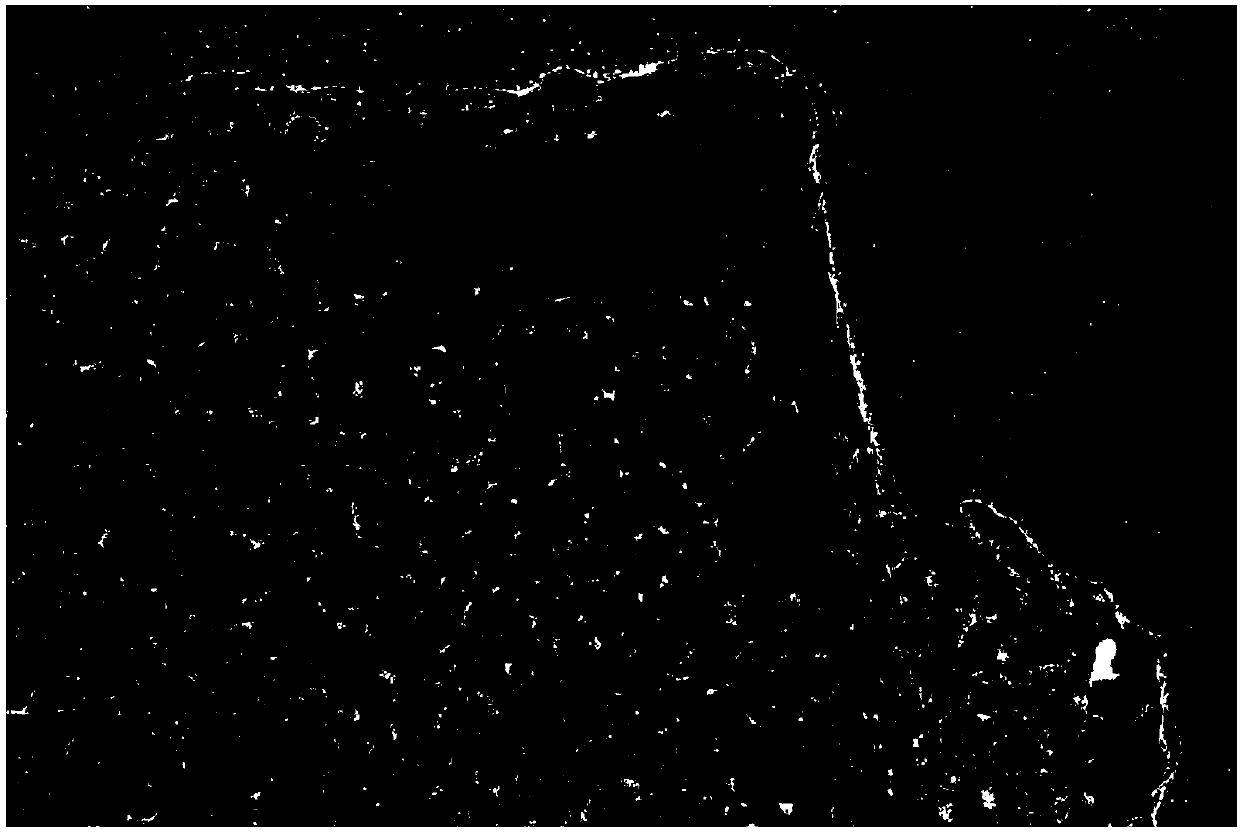Preparation method of Fe3O4/nitrogen-doped graphene material capable of being used for lithium ion battery negative electrode
A nitrogen-doped graphene, lithium-ion battery technology, applied in nanotechnology for materials and surface science, battery electrodes, secondary batteries, etc., can solve problems such as poor particle size uniformity, poor controllability, and shedding. Achieve the effects of strong controllability, excellent lithium battery performance, and rich raw materials
- Summary
- Abstract
- Description
- Claims
- Application Information
AI Technical Summary
Problems solved by technology
Method used
Image
Examples
Embodiment 1
[0017] Disperse 50mg of graphene oxide in 50ml of deionized water, add 50mg of dopamine hydrochloride, stir for 30min, add a certain amount of Tris to adjust the pH of the solution to 8.5, and then react at room temperature for 24 hours. After the reaction, the product is pumped with deionized water Filter until neutral and dry at 80°C for 12h. The obtained polydopamine / graphene composite was redispersed into 50 mL of deionized water. Then add 400 mg of ferric nitrate to the solution, stir for 30 min, then use a syringe pump to add 1 mol / L NaOH solution at a rate of 250 μL / min to adjust the pH to 9, react at room temperature for 24 h, wash with deionized water to neutral, and 80 °C Dry for 12 hours.
[0018] The obtained material was ground and put into a tube furnace, and the temperature was raised to 500 °C at a rate of 2 °C / min under nitrogen atmosphere, and then kept for 2 h to obtain Fe 3 o 4 / Nitrogen-doped graphene composites. The obtained nanoparticles are evenly d...
Embodiment 2
[0020] Take 100 mg of graphene oxide and disperse it in 50 ml of deionized water, add 100 mg of dopamine hydrochloride, stir for 30 minutes, add a certain amount of Tris to adjust the pH of the solution to 8.5, and then react at room temperature for 12 hours. After the reaction, the product is pumped with deionized water Filter to neutral and dry at 80°C for 12h. The polydopamine / graphene composite was redispersed into 50 mL of deionized water, and then 1000 mg of ferric nitrate was added to the solution. After stirring for 30 min, 1 mol / L NaOH solution was added at a rate of 500 μL / min using a syringe pump to adjust the pH to 9 , reacted at 50°C for 12h, washed with deionized water to become neutral, and dried at 80°C for 12h.
[0021] The obtained material was ground and placed in a tube furnace, and the temperature was raised to 500 °C at a rate of 2 °C / min under an argon atmosphere, and then kept for 2 h to obtain Fe 3 o 4 / Nitrogen-doped graphene composites.
Embodiment 3
[0023] Take 100 mg of graphene oxide and disperse it in 50 ml of deionized water, add 100 mg of dopamine hydrochloride, stir for 30 minutes, add a certain amount of Tris to adjust the pH of the solution to 8.5, and then react at room temperature for 24 hours. After the reaction, the product is pumped with deionized water Filter to neutral and dry at 80°C for 12h. The polydopamine / graphene complex was redispersed into 50 mL of deionized water, and then 200 mg of ferric chloride was added to the solution. After stirring for 30 min, a 1 mol / L NaOH solution was added at a rate of 1000 μL / min using a syringe pump to adjust the pH~ 9. React at 40°C for 12 hours, wash with deionized water to make it neutral, and dry at 80°C for 12 hours.
[0024] The obtained material was ground and placed in a tube furnace, and the temperature was raised to 400 °C at a rate of 5 °C / min under an argon atmosphere, and then kept for 1 h to obtain Fe 3 o 4 / Nitrogen-doped graphene composites. The obt...
PUM
| Property | Measurement | Unit |
|---|---|---|
| particle diameter | aaaaa | aaaaa |
| particle diameter | aaaaa | aaaaa |
Abstract
Description
Claims
Application Information
 Login to View More
Login to View More - Generate Ideas
- Intellectual Property
- Life Sciences
- Materials
- Tech Scout
- Unparalleled Data Quality
- Higher Quality Content
- 60% Fewer Hallucinations
Browse by: Latest US Patents, China's latest patents, Technical Efficacy Thesaurus, Application Domain, Technology Topic, Popular Technical Reports.
© 2025 PatSnap. All rights reserved.Legal|Privacy policy|Modern Slavery Act Transparency Statement|Sitemap|About US| Contact US: help@patsnap.com


